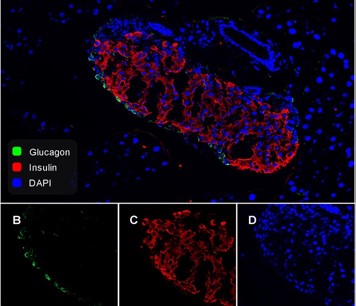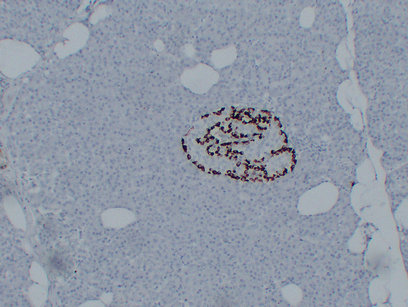Anti-Human GLP-1(aa 7-36) monoclonal antibody
Mouse Anti-Human GLP-1(aa 7-36) monoclonal antibody for ELISA(Cap), IHC
DCABY-4437 - DCABY-4442
We recommend the following for sandwich ELISA (Capture - Detection) in the detection of active GLP-1:
DCABY-4437 - DCABY-4444
| Product Name | Cat. No. | Applications | Host Species | Datasheet | Price | Add to Basket |
|---|---|---|---|---|---|---|
| Anti-Mouse IgG1 polyclonal antibody [HRP] | CPBT-68024GM | ELISA | Goat |
|
Inquiry | |
| Anti-Mouse IgG1 polyclonal antibody [R-PE] | CPBT-68086GM | FC | Goat |
|
Inquiry | |
| Anti-Mouse IgG1 polyclonal antibody [FITC] | CPBT-68023GM | ELISA FLISA ICC | Goat |
|
Inquiry | |
| Recombinant Alpaca Anti-Mouse IgG1 Fc monoclonal antibody, clone WII413 [Alexa Fluor®647] | CABT-L4221 | IF WB ELISA | Alpaca |
|
Inquiry | |
| Anti-Mouse IgG1 polyclonal antibody [AP] | CPBT-68022GM | IHC-Fr ELISA IHC-P WB | Goat |
|
Inquiry | |
| Anti-Mouse IgG1 monoclonal antibody, clone LO-MG1-2 [Biotin] | CABT-54626RM | ELISA | Rat |
|
Inquiry | |
| Anti-Mouse IgG1 monoclonal antibody, clone LO-MG1-2 [FITC] | CABT-54627RM | FC | Rat |
|
Inquiry | |
| Anti-Mouse IgG1 monoclonal antibody, clone LO-MG1-2 [HRP] | CABT-54628RM | ELISA | Rat |
|
Inquiry | |
| Recombinant Alpaca Anti-Mouse IgG1 Fc monoclonal antibody, clone WII413 | CABT-L4220 | IF WB ELISA | Alpaca |
|
Inquiry |
| Product Name | Cat. No. | Applications | Host Species | Datasheet | Price | Add to Basket |
|---|
The Real-World Observational Prospective Study of Health Outcomes with Dulaglutide and Liraglutide in Type 2 Diabetes Patients (TROPHIES): Baseline Patient-Reported Outcomes
DIABETES THERAPY
Authors: Boye, Kristina S.; Sapin, Helene; Garcia-Perez, Luis-Emilio; Rosilio, Myriam; Orsini Federici, Marco; Heitmann, Elke; Jung, Heike; Aigner, Ulrich; Guerci, Bruno; Giorgino, Francesco; Norrbacka, Kirsi
Combination therapy with pioglitazone/exenatide improves beta-cell function and produces superior glycaemic control compared with basal/bolus insulin in poorly controlled type 2 diabetes: A3-year follow-up of the Qatar study
DIABETES OBESITY & METABOLISM
Authors: Abdul-Ghani, Muhammad; Migahid, Osama; Megahed, Ayman; DeFronzo, Ralph A.; Al-Ozairi, Ebaa; Jayyousiv, Amin
Invoice / Purchase Order
Credit card
![]()

